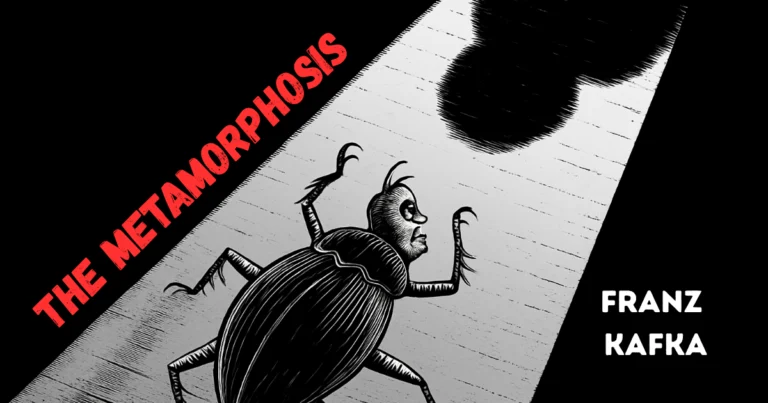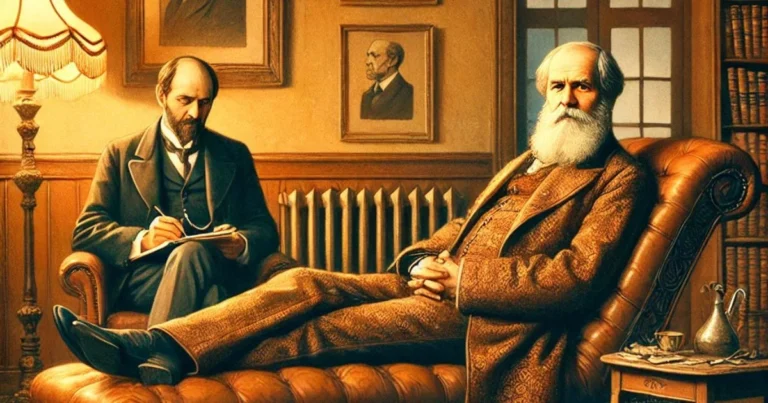Fight Club: A Battle Against Modern Consumerism
What if your so-called perfect life, shaped by possessions and routines, was nothing more than an illusion? Fight Club, the cult classic directed by David Fincher and released in 1999, doesn’t just pose this question, it confronts it head-on. More than a film, it is a scathing critique of modern society and a haunting exploration of the darkest corners of the human psyche. Adapted from Chuck Palahniuk’s iconic novel, this psychological thriller weaves together themes of identity, consumerism, and the search for meaning, brought to life through the captivating performances of Edward Norton and Brad Pitt.
This article delves into how Fight Club navigates profound psychological themes such as dissociation, nihilism, and rebellion against an alienating world, all while showcasing the masterful direction of Fincher’s cinematic vision.
About the Film
Released in 1999 and directed by David Fincher, Fight Club stars Edward Norton as the Narrator, Brad Pitt as Tyler Durden, and Helena Bonham Carter as Marla Singer.
The film follows an unnamed protagonist trapped in a monotonous, consumer-driven life and plagued by chronic insomnia. His world is turned upside down when he meets Tyler Durden, a charismatic anarchist. Together, they form an underground fight club, an outlet for their collective frustration with the superficiality of modern existence. However, what begins as a personal escape quickly evolves into a nihilistic movement intent on dismantling societal structures. The narrative explores rebellion, identity, and the devastating consequences of rejecting established norms.
Set against the backdrop of a late-20th-century disillusionment with capitalism and consumer culture, Fight Club, adapted from Palahniuk’s 1996 novel, delves into dark and provocative themes that reflect the cultural anxieties of the 1990s, such as social isolation and identity crises.
David Fincher, already acclaimed for films like Seven (1995), cements his status as a master of the psychological thriller with Fight Club. Supported by a top-tier cast, he crafts a bold and immersive mise-en-scène that draws viewers into a disorienting and oppressive world. Though controversial upon release, the film is now widely recognized as a sharp critique of contemporary society and a powerful commentary on the psychological fractures of modern man.
The Psychology of an Alienated Society
Fight Club operates as a psychological laboratory, dissecting the mind’s response to an alienating society. Central to the film is the theme of identity dissociation, embodied in the relationship between the Narrator and Tyler Durden. As a mental projection of the Narrator, Tyler represents repressed desires, raw freedom, rebellion, and unfiltered self-expression. This dissociative identity reveals a defense mechanism against psychological distress and existential emptiness.
The film also scrutinizes consumerism’s grip on personal identity. The Narrator personifies the modern man, attempting to define his worth through material possessions. Tyler’s philosophy, in contrast, embraces destructive nihilism, rejecting consumerism as a dehumanizing illusion.
Another striking theme is the use of violence as catharsis. Physical fights serve as a visceral outlet for repressed emotion, offering a raw bodily experience that contrasts with the mental numbness of daily life.
Ultimately, Fight Club raises compelling questions about memory, distorted perception, and the mind’s coping strategies in the face of identity collapse. The result is a psychologically rich and deeply unsettling narrative.
Character Analysis: Embodied Psyches
Each major character in Fight Club represents a psychological dimension, revealing the inner struggles of the Narrator.
The Narrator: The Fragmented Self
Played by Edward Norton, the Narrator symbolizes modern man’s alienation. His chronic insomnia reflects a rupture between his conscious self and subconscious, a symptom of the existential vacuum exacerbated by consumer culture. His search for identity and meaning drives him to create Tyler Durden, a manifestation of his suppressed instincts. Tyler becomes a psychological refuge, allowing the Narrator to defy oppressive societal norms. This split personality exposes the tension between rational order and primal chaos.
Tyler Durden: Primal Instinct
Brad Pitt’s Tyler is a raw, anarchistic force unbound by societal constraints. He embodies Carl Jung’s concept of the “shadow”, the unconscious repository of rejected impulses and desires. Charismatic, seductive, and destructive, Tyler pulls the Narrator into a spiral of violence and nihilism. He symbolizes rebellion against a society seen as emasculating and artificial, advocating for a return to authentic, instinct-driven existence.
Marla Singer: The Mirror of Anguish
Portrayed by Helena Bonham Carter, Marla is an ambiguous figure oscillating between despair and provocation. She represents the Narrator’s emotional chaos and unfiltered confrontation with life’s absurdity. Marla acts as a mirror and catalyst, forcing the Narrator to grapple with his contradictions and fear of vulnerability.
Together, these three characters form a psychological triangle, ego, shadow, and superego, through which Fight Club explores trauma, fractured identity, and the yearning for psychological wholeness in an alienating world.
Cinematic Craft: A Visual Descent into Chaos
David Fincher’s sophisticated direction heightens the film’s psychological tension and narrative instability. Sweeping, often dizzying camera movements pull viewers into the Narrator’s distorted perspective, constantly blurring the line between reality and hallucination. The film’s cold, dark color palette reflects the protagonist’s depression and alienation, while flashes of red signal violence and destructive passion.
One pivotal scene, the first fight between the Narrator and Tyler, showcases Fincher’s immersive style. Set in a dimly lit parking lot, the tight camera angles and raw sound design create a visceral, almost primal atmosphere. The juxtaposition of physical pain and emotional awakening captures the paradox of self-destruction as a means of transformation.
Fincher also makes a daring narrative choice by casting two actors to portray what is ultimately one fractured identity: Edward Norton as the Narrator and Brad Pitt as Tyler. This is a departure from traditional portrayals of dissociative identity disorder, such as in Psycho or Split, where a single actor plays multiple personalities. By using two distinct actors, Fincher allows viewers to fully inhabit the Narrator’s delusion, maintaining the illusion of Tyler’s independence until the climactic reveal. This approach deepens the psychological impact, highlighting the internal conflict between chaotic liberation and the constraints of reason. Fight Club stands out as a landmark depiction of dissociation in cinema.
Subliminal Imagery: Hidden Messages and Mental Fragmentation
Among the film’s most innovative techniques is Fincher’s use of subliminal imagery, fleeting appearances of Tyler Durden before his official introduction. These visual blips serve multiple narrative and thematic purposes:
Awakening Consciousness
These blink-and-you’ll-miss-it appearances of Tyler hint at the Narrator’s unconscious mind already rebelling against his repressed, conformist existence. Each subliminal frame acts as an invisible jolt, signaling the growing psychological instability. Tyler, as a projection of unacknowledged desires, is beginning to surface.
Symbol of Latent Chaos
Beyond foreshadowing dissociation, these images represent the inner turmoil brewing beneath the Narrator’s rational facade. They visualize the creeping disintegration of reality and the rise of anarchic impulses.
Metaphor for Control and Manipulation
The subliminal imagery also critiques the invisible forces shaping our behavior, advertising, social norms, and unconscious drives. Tyler manipulates not only the Narrator but also the audience, becoming a metaphor for the consumerist messages that subtly invade our consciousness.
These visual tricks serve as psychological cues, magnifying the film’s tension while encouraging viewers to question their perception and the hidden influences that shape their beliefs.
Critical Reception and Cultural Resonance
Upon its release in 1999, Fight Club sharply divided audiences. Some decried it as a glorification of violence, while others praised its philosophical depth. In truth, the film does not endorse violence; rather, it uses it as a narrative device to expose the absurdity of modern alienation and consumerism. Tyler Durden’s revolutionary zeal may be intoxicating, but his descent into destruction highlights the perils of nihilism and the void left by a lack of meaning.
Over time, Fight Club has been embraced as a brilliant satire, an incisive commentary on what happens when a directionless society spirals into chaos. It continues to provoke reflection on identity, freedom, and rebellion.
Fight Club is far more than a tale about underground fighting. It is a powerful dissection of modern existential crises and a piercing critique of societal structures. With its layered portrayal of the human mind and its scathing commentary on consumerism, it remains a landmark film, one that challenges viewers to reflect on who they are, what they believe, and the systems they inhabit.
Reference
https://www.babelio.com/livres/Palahniuk-Fight-Club/5629

Amine Lahhab
Television Director
Master’s Degree in Directing, École Supérieure de l’Audiovisuel (ESAV), University of Toulouse
Bachelor’s Degree in History, Hassan II University, Casablanca
DEUG in Philosophy, Hassan II University, Casablanca







